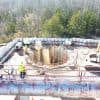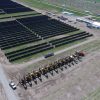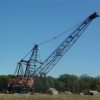Explosives are energy in a different form than others. Electricians know how to calculate the amount of energy it would require to start and run motors and lights and other electrical components. Car manufacturers can calculate the mileage one should expect, or hope, to get from a vehicle before it is purchased. After you purchase a car, you then gain historical knowledge based on how much mileage your car actually gets. So after a while, you know how much gas you better have in your gas tank before you set off on a trip. And after a few months of utility bills, you know how much it will take to run the electrical appliances around you.
Gasoline, natural gas, propane and electricity are the most common forms of energy made available to everybody for everyday use. People who manufacture products that consume this energy also know how to calculate it’s efficiency.
Blasters know how to calculate the efficiency of the energy they use. By using only the amount of energy it takes to perform the job at hand, one can be assured that there isn’t enough left over to cause any ground vibration damage to property outside the blast site.
It would be unreasonable to think that a single gallon of gasoline could propel your car across several counties and back again, without running out. It would be unreasonable to think that you could run your home with a single kilowatt of electrical energy for a month.
Each individual electrical appliance in your home uses a different quantity of power. This is based on it’s size and workload. Your air conditioner or heater is going to require more electricity than a light bulb in a lamp would need. A big truck will use more fuel per mile than compact car if everything is running efficiently.
Different kinds of rock require different amounts of energy in the fracturing process. Blaster’s must take all the properties of the geology into consideration when designing a blast round.
The United States Bureau of Mines adopted a mathematical formula that blasters can use when designing a blast, that when followed, will assure the blaster that there is not enough energy being released at any one time to cause damage to the closest structure. A blaster who is not using a seismograph is required to use this mathematical formula in designing what we call the “Maximum Pounds per Delay” of explosives used. The mathematical formula used, is known as the “Scaled Distance Formula.” This formula, when used, is conservative to the point that it assures there will not be enough energy released into the rock at any one delay period to cause ground vibration damage to a well or structure.
A blasting operator who does not routinely use seismographs to record the actual ground vibration must adhere to the “Scaled Distance Formula” to design the “Maximum Pounds Per Delay” for his blast.









